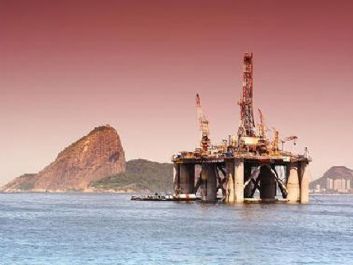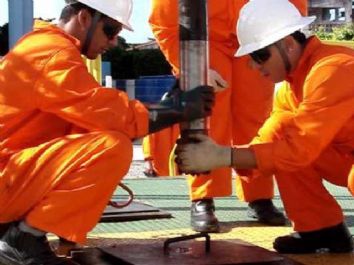
The revival of deepwater Gulf of Mexico drilling activity following the Macondo incident in 2010 is expected to continue, with operators expected to invest over $70 billion by 2030 on exploration in the region, according to a recent report by Wood Mackenzie.
That investment level – more than all other key deepwater provinces combined – will allow operators to tap 12.5 billion barrels of oil equivalent by 2030, creating value of around $30 billion, said Julie Wilson, senior analyst for Wood Mackenzie's exploration service, during a press briefing Wednesday in Houston. Only Brazil, which has enormous potential in the pre-salt play, materially surpasses these results Wilson said.
While deepwater Gulf production has suffered in part from low drilling levels in 2010/2011,which could not mitigate the natural decline in production, Wood Mackenzie analysts anticipate that regional production will exceed the 2009 peak reaching 2 million barrels per day in the 2018/2019 time period.
Deepwater GOM Advantages
The changed regulatory environment following the Macondo incident - higher costs and rig constraints - pose challenges for the Gulf, as do the increasingly deeper well water depths, with some wells approaching 25,000 to 30,000 feet. Despite these challenges, Wood Mackenzie analysts are bullish on the deepwater Gulf.
"Even though the Gulf of Mexico is more expensive than other regions in the large part, we're positive about it because it's not restricted to the supermajors or NOCs [national oil companies] but to independents as well," said Norm Pokutylowicz, analyst for upstream research at Wood Mackenzie.
Advantages to operating in the deepwater Gulf include the opportunity for smaller and larger-sized companies to participate in offshore leasing, unlike other regions, where participation in licensing rounds is by invitation only, said Wilson.
Offshore licensing rounds are also held on a more frequent basis compared with countries such as Angola, said Wilson. Forty-four operators currently hold acreage in the deepwater Gulf, compared with 15 companies in Angola and Brazil's deepwater plays.
Other advantages for operators in the deepwater Gulf include the region's existing offshore infrastructure, access to refining facilities along the Gulf Coast and favorable fiscal terms. Unlike other countries, deepwater Gulf operators also do not have to contend with local content, which are major issues in Brazil and in Africa, Wilson noted.
Despite increased regulations, an exodus of operators from the deepwater Gulf did not occur, with new operators entering the region, a trend that Wood Mackenzie anticipates will continue. While Petrobras is looking to divest assets in the Gulf – with Dow Jones reports saying the company was near closing a sale of up to $6 billion in Gulf assets – Wilson attributed the move is attributed to its need to fund its exploration plans at home in Brazil.
The subsalt Miocene and Paleogene plays, with estimated volumes of 4.3 billion barrels of oil equivalent and 5.2 billion barrels of oil equivalent respectively, will drive investment in the Gulf through 2030. The deepwater Gulf's subsalt and emerging plays offer volume, but companies can also generate value from conventional, lower cost mature plays such as the Jurassic and mid-late Miocene, said Wilson.
Development Drilling to Drive Activity
The moratorium following the Macondo incident in 2010 and departure of drilling rigs from the Gulf sharply hindered drilling in 2011. However, the rebound in activity seen in 2010 is expected to continue, particularly in development drilling as operators seek to boost production and bring new projects on stream, said Lauren Payne, Gulf of Mexico analyst for upstream research at Wood Mackenzie.
Development drilling is expected to reach a new peak by 2013, and account for more than 60 percent of total activity through 2015. Wood Mackenzie analysts estimate that more than $20 billion will be spent on development well drilling from on-stream projects along through 2015.
Subsea and facility spending are expected be the main drivers behind that investment with an estimated $27 billion through 2015 as new projects such as Jack/St. Malo and Hadrian move forward.
Unused Processing Capacity Offers Opening for Independents
Unused deepwater processing capacity also offers opportunities for independents to create value. Currently 75 percent of processing capacity is unused. By 2017, up to 70 percent of deepwater Gulf processing capacity will remain unused, said Pokutylowicz. This does not take into account what operators who hold capacity will set aside for future production or variances in production
However, technical challenges, such as whether a facility with excess capacity can physically handle additional hook-ups without major changes, and whether production will be commercial if brought online, mean the amount of additional processing capacity available will be smaller, said Pokutylowicz.
Demand will come in the form infill development and tiebacks, while value will be derived either by operators monetizing discovered resources or from third-party tieback tariffs. As major companies seek to divest once high-margin fields as they mature, independents will have the opportunity to take ownership of platforms, Pokutylowicz noted.
This trend of independents taking ownership of deepwater Gulf platforms is underway and expected to continue, with Stone Energy's acquisition of the Pompano field from BP and Plains Exploration and Production's recent acquisition of three BP platforms, Polutyowicz said. Independents currently own 20 percent of platforms in the Gulf, compared with 35 percent of platforms held by large caps and 45 percent by major oil and gas companies.
An additional 2 billion barrels of oil equivalent of reserves are expected to be produced by subsea tie-backs from fields under development, probable developments and yet to be discovered developments by 2017, Pokutylowicz noted. New third party tiebacks are also expected to generate an extra $200 million in tariffs each year.
Available processing capacity is not distributed evenly, with available capacity concentrated mainly in the Green Canyon and Mississippi Canyon regions, said Pokutylowicz. The unused processing capacity is split between oil and gas, with more capacity available at older facilities.
The Mississippi Canyon and Green Canyon areas offer dense infrastructure with multiple facilities, Pokutylowicz told Rigzone. The fragmented infrastructure offers independents room to enter the region and expand or take a field to the next stage of development.
While floating production, storage and offloading (FPSO) systems offer a low-cost means of testing a high-risk play, Petrobras' deployment of the first FPSO in the deepwater Gulf for its Chinook field, which began production last month, is not likely the start of a trend, meaning that additional oil pipeline capacity will likely be added in the Gulf.
Longer Drilling Times Not Likely to Be Long-Term Trend
The changes to offshore drilling and safety regulations following Macondo has resulted in operators taking 10 percent longer to drill wells compared with drilling time before the Macondo incident, said Payne.
The drilling time for the subsalt Miocene and conventional Pliocene/Miocene plays has increased post-Macondo with the average drilling time largely flat for other plays such as the Jurassic. However, this is unlikely to be a long-term trend as operators find ways to mitigate increased regulatory requirements, such as utilizing two blowout preventers on drilling rigs, Payne noted.
While the deepwater Gulf of Mexico remains an attractive region, Wood Mackenzie analysts noted that capital, equipment and worker constraints in the deepwater Gulf and worldwide will impact project prioritization.
The recent lack of exploration drilling will impact long-term reserves replacement, said Payne.
"In addition, the high-profile Paleogene play still faces substantial technological risks, in an ultra-deepwater environment with very poor reservoir qualities."
Despite these obstacles, Wood Mackenzie sees a bright outlook for the deepwater Gulf, with a 'new equilibrium' in terms of a stable, predictable environment anticipated in 2013.
Wood Mackenzie's analysis is based on a Brent crude price of $85/barrel and Henry Hub gas price of $4/Mcf. Wood Mackenzie sees its forecast as achievable regardless of the outcome of the presidential election this November.
Source: RIGZONE






